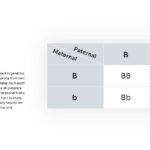Reginald Crundall Punnett (1875–1967) was a pioneering British geneticist whose work fundamentally shaped modern genetics. Below is a detailed overview of his life, contributions, and legacy:
👶 1. Early Life and Education
- Born on June 20, 1875, in Tonbridge, Kent, England. A childhood bout of appendicitis sparked his interest in natural history after reading Jardine’s Naturalist’s Library .
- Studied medicine at Gonville and Caius College, Cambridge, but switched to zoology, graduating first in his class in 1898. He later earned a master’s degree (1901) .
- Early research focused on marine worms (nemerteans), with two species named after him: Cerbratulus punnetti and Punnettia splendia .
🔬 2. Key Scientific Contributions
- Punnett Square:
- Devised the Punnett square in 1905 as a visual tool to predict genetic inheritance patterns. First described in the 2nd edition of his textbook Mendelism (1907) and later refined in a 1906 Royal Society report .
- Genetic Linkage:
- With William Bateson, co-discovered “partial coupling” (later termed genetic linkage) in sweet peas (1904). They observed traits inherited together, challenging Mendel’s independent assortment theory and laying groundwork for chromosomal genetics .
- Population Genetics:
- Posed a question to mathematician G. H. Hardy about dominant traits not overtaking populations, leading to the Hardy-Weinberg principle (1908), a cornerstone of population genetics .
- Applied Genetics:
- During WWI, developed autosexing chickens by exploiting sex-linked plumage genes. This allowed early culling of male chicks, conserving resources (Heredity in Poultry, 1923) .
- Evolutionary Biology:
- Studied mimicry in butterflies (Mimicry in Butterflies, 1915), arguing evolution occurred via discontinuous “saltations”—contrasting Darwinian gradualism and later clashing with R. A. Fisher’s views .
📚 3. Academic and Institutional Roles
- Professor of Genetics at Cambridge:
- Appointed first Arthur Balfour Professor of Genetics (1912) after Bateson declined the position .
- Journal of Genetics:
- Co-founded with Bateson in 1910 and edited until Bateson’s death (1926) .
- Honors:
- Elected Fellow of the Royal Society (1912) and awarded its Darwin Medal (1922) .
💍 4. Personal Life and Legacy
- Married Eveline Maude Froude in 1913; no children .
- Retired in 1940 but continued poultry research until 1955. Died on January 3, 1967, aged 91 .
- Legacy:
- Popularized Mendelian genetics through accessible textbooks and the Punnett square, still used in education today .
- His poultry work revolutionized agriculture, while his linkage studies influenced gene mapping .
💬 Notable Quote
“Increased knowledge of heredity means increased power of control over the living thing…” .
Quick Facts Table
| Aspect | Detail |
|---|---|
| Born | June 20, 1875, Tonbridge, Kent, England |
| Died | January 3, 1967 (aged 91), Bilbrook, Somerset, England |
| Key Invention | Punnett square (1905) |
| Major Books | Mendelism (1905), Mimicry in Butterflies (1915), Heredity in Poultry (1923) |
| Academic Post | First Arthur Balfour Professor of Genetics, Cambridge (1912–1940) |
| Collaborators | William Bateson (genetic linkage), G. H. Hardy (population genetics) |
Punnett’s blend of theoretical insight and practical innovation cemented his role as a foundational figure in genetics, bridging laboratory science and real-world applications 🧬.
